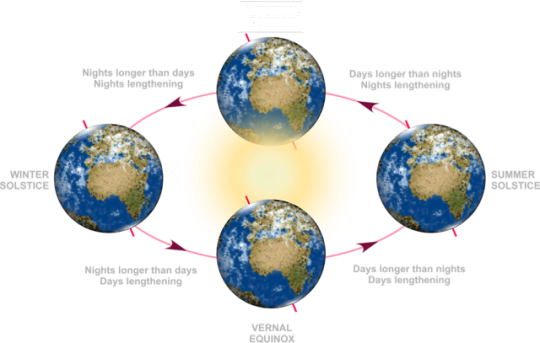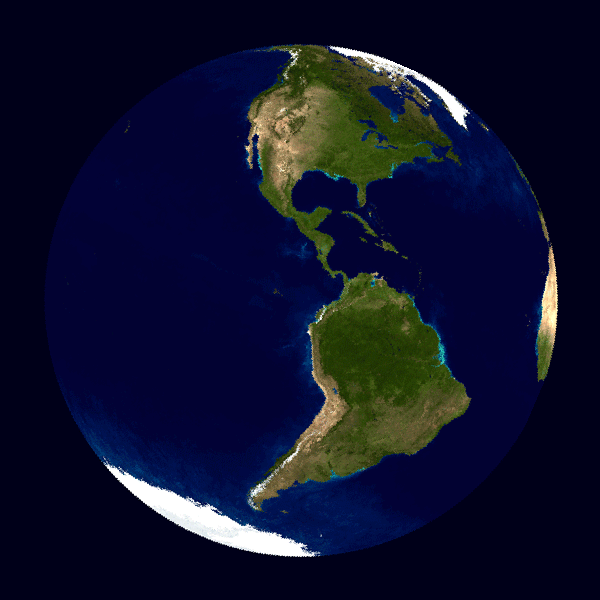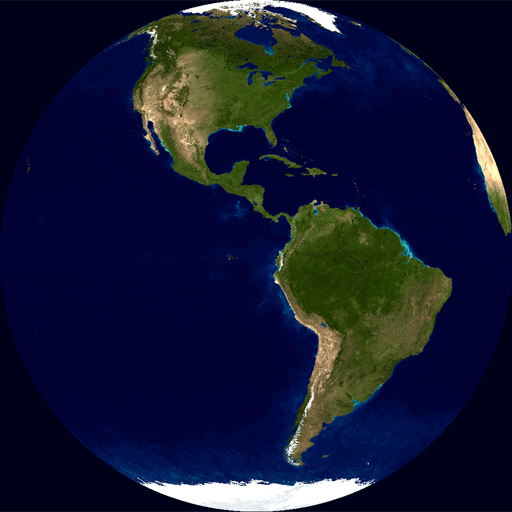Spring Equinox
Vernal Equinox

Vernal Equinox

The Spring Equinox marks the real Astronomical Start of Spring.

Earth spins on a tilt of 23.4 degrees off vertical
An equinox is commonly regarded as the moment when the plane of Earth’s equator passes through the center of the Sun’s disk,
which occurs twice each year, around 20 March
and
23 September
and
23 September
In
other words, it is the point in which the center of the visible sun is
directly over the equator. This simplified, but incorrect, understanding
of Earth’s orbital motion can lead to errors of up to 69 seconds from the actual time of equinox.
On the day of an equinox, daytime and nighttime are of approximately equal duration all over the planet. They are not exactly equal, however, due to the angular size of the Sun and atmospheric refraction. The word is derived from the Latin aequinoctium, from aequus (equal) and nox (genitive noctis) (night).
Date
When Julius Caesar established the Julian calendar in 45 BC, he set 25 March as the date of the spring equinox. Because the Julian year is longer than the tropical year by about 11.3 minutes on average (or 1 day in 128 years), the calendar “drifted” with respect to the two equinoxes — such that in AD 300 the spring equinox occurred on about 21 March, and by AD 1500 it had drifted backwards to 11 March.
This drift induced Pope Gregory XIII to create a modern Gregorian calendar. The Pope wanted to continue to conform with the edicts concerning the date of Easter of the Council of Nicaea of AD 325, which means he wanted to move the vernal equinox to the date on which it fell at that time (21 March is the day allocated to it in the Easter table of the Julian calendar). However, the leap year intervals in his calendar were not smooth (400 is not an exact multiple of 97). This causes the equinox to oscillate by about 53 hours around its mean position. This in turn raised the possibility that it could fall on 22 March, and thus Easter Day might theoretically commence before the equinox. The astronomers chose the appropriate number of days to omit so that the equinox would swing from 19 to 21 March but never fall on the 22nd (although it can in a handful of years fall early in the morning of that day in the Far East).
The instants of the equinoxes are currently defined to occur when the ecliptic longitude of the Sun is either 0° or 180°.
As the true motion of the Earth is affected by the gravitational pull
of the Sun and Moon (and to lesser extent the other planets), there are
tiny (up to 1¼ arcsecond) variations of the Sun’s ecliptic latitude (discussed in section below) that may mean the Sun’s center is not precisely over the equator at the moment of equinox.
On the day of an equinox, daytime and nighttime are of approximately equal duration all over the planet. They are not exactly equal, however, due to the angular size of the Sun and atmospheric refraction. The word is derived from the Latin aequinoctium, from aequus (equal) and nox (genitive noctis) (night).
Date
When Julius Caesar established the Julian calendar in 45 BC, he set 25 March as the date of the spring equinox. Because the Julian year is longer than the tropical year by about 11.3 minutes on average (or 1 day in 128 years), the calendar “drifted” with respect to the two equinoxes — such that in AD 300 the spring equinox occurred on about 21 March, and by AD 1500 it had drifted backwards to 11 March.
This drift induced Pope Gregory XIII to create a modern Gregorian calendar. The Pope wanted to continue to conform with the edicts concerning the date of Easter of the Council of Nicaea of AD 325, which means he wanted to move the vernal equinox to the date on which it fell at that time (21 March is the day allocated to it in the Easter table of the Julian calendar). However, the leap year intervals in his calendar were not smooth (400 is not an exact multiple of 97). This causes the equinox to oscillate by about 53 hours around its mean position. This in turn raised the possibility that it could fall on 22 March, and thus Easter Day might theoretically commence before the equinox. The astronomers chose the appropriate number of days to omit so that the equinox would swing from 19 to 21 March but never fall on the 22nd (although it can in a handful of years fall early in the morning of that day in the Far East).
1-

2- 

1- Animation of Earth's rotation around the planet's axis
2- Earth spins on a tilt of 23.4 degrees off vertical



No comments:
Post a Comment